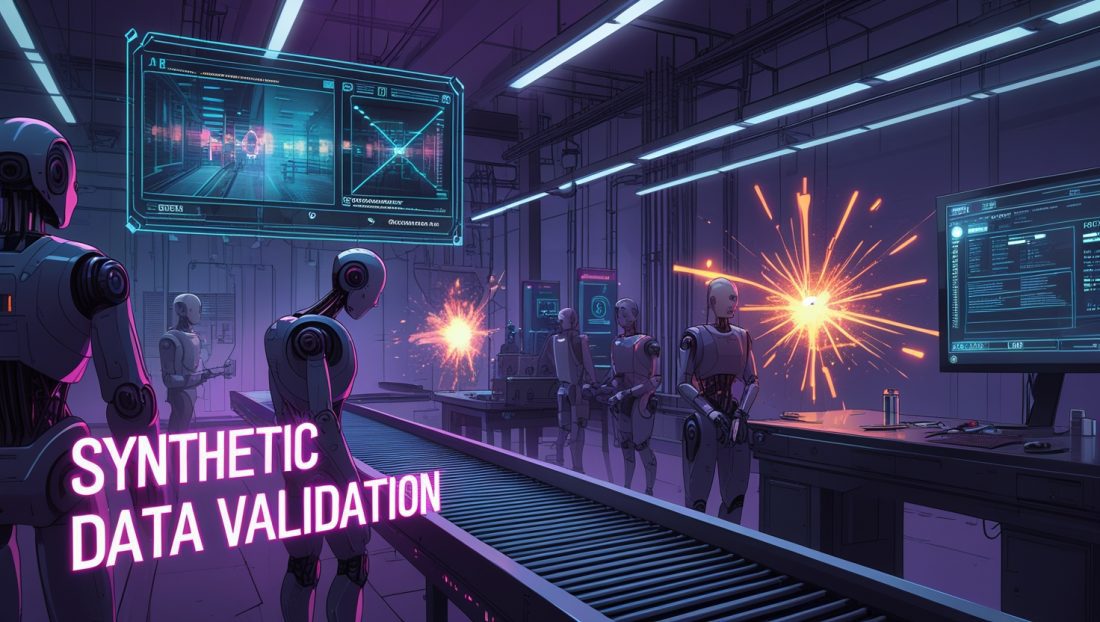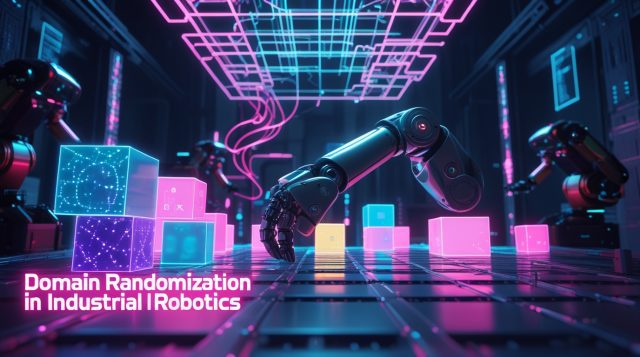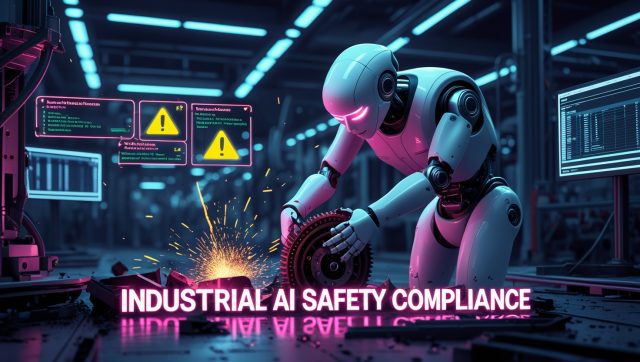When Digital Perfection Meets Factory Reality
What happens when robots trained in flawless virtual worlds face chaotic factory floors? In 2024, TekMotion Systems discovered the hard way. Their $2.3 million Omniverse-trained robotic line suffered 47 production stoppages in its first week. CTO Elena Rodriguez admitted: “We relied on synthetic data as if it were infallible truth. It turned out to be our costliest error.”
This incident exposes a critical vulnerability in industrial AI. As synthetic data validation gaps widen, manufacturers face escalating risks. The automotive sector—where 68% of robotic training uses NVIDIA Omniverse—reported $1.2 billion in simulation-related losses last year alone. For a deeper look at how AI-driven simulations are transforming industries despite these challenges, explore how industrial AI and digital twins are reshaping factories in 2025.
The Physics Deception Problem
Why Digital Friction Lies
NVIDIA Omniverse prioritizes visual realism over physical accuracy. A BMW Group study found simulated robotic arms showed 12% less joint friction than physical counterparts. This “torque deficit illusion” causes real robots to overshoot positions when handling transmission parts.
Real-world consequence: At a Volvo plant in South Carolina, this variance caused assembly robots to dent 214 car roofs before engineers identified the miscalibration. Production halted for 72 hours. To understand how advanced robotic precision is tackling such issues, check out BMW’s humanoid robot precision manufacturing.
Validation gap: Simulated physics engines can’t replicate:
- Material fatigue during continuous operation
- Lubricant viscosity changes in temperature swings
- Vibration harmonics from adjacent machinery
For insights into how simulation technologies are evolving to replace physical prototyping, see how robotics simulation is cutting costs and improving accuracy.
Sensor Deception: The Dirty Secret of Clean Data
Industrial sensors face constant interference—electromagnetic noise from welders, metal dust clouds, or steam from paint shops. Synthetic data generators struggle to replicate these variables.
Case in point: Tesla’s Fremont factory expansion revealed a critical flaw. Robots trained in pristine Omniverse environments froze when sunlight from new skylights created glare patterns on windshields—an unmodeled scenario.
Dr. Arun Singh (MIT Robotics Lab) explains: “Perception models fail catastrophically when synthetic LIDAR lacks atmospheric particle scattering. It’s like training soldiers in vacuum chambers then sending them into sandstorms.” For a broader perspective on why AI in robotics sometimes falters, dive into why AI in robotics is failing and what’s holding it back. To learn more about overcoming sensor-related challenges, the Robotics Industries Association offers resources on real-world sensor integration for industrial automation.
The $47 Million Paint Job Failure
A major European automaker recalled 12,000 vehicles in March 2025 after Omniverse-trained paint robots consistently missed door edges. The root cause? Synthetic training data lacked material memory:
- Viscosity blindness: Simulated robots sprayed perfect, non-drying paint
- Tool wear ignorance: No degradation models for spray nozzles (real nozzles degraded 0.3μm/1,000 cycles)
- Surface variability gap: Digital panels remained flawlessly smooth
Fraunhofer Institute’s Dr. Hana Weber clarifies: “Real paint forms droplets on cold metal. Without distance adjustments, we got uneven coatings.” The financial impact: $34 million in recalls plus $13 million in line reconfiguration.
Four Validation Pillars for Trustworthy Industrial AI
1. Hybrid Calibration Protocols
Toyota now runs weekly physical tests to anchor simulations. Robotics lead Kenji Tanaka states: “We found synthetic joint resistance drifted 0.8% monthly without real-world checks.
” Siemens’ SynthAnchor platform automatically adjusts simulation parameters by comparing Omniverse outputs with physical sensor data. Early adopters report 63% fewer assembly defects. To explore how AI-driven analytics are boosting factory efficiency, read about industrial AI analysis for surviving 2025’s manufacturing challenges.
2. Chaos Engineering for AI
Progressive manufacturers inject synthetic “noise layers” mimicking:
- Vibration profiles from stamping presses
- Electrical interference from arc welders
- Optical distortions from engine heat haze
Mcity’s testing ground uses this approach to generate 217,000 edge-case scenarios for autonomous forklifts. For more on how edge-case training enhances AI resilience, visit Mcity’s research hub for cutting-edge autonomous system testing insights.
3. Material Reality Scanning
Ford’s “Digital Twin DNA” initiative laser-scans 50+ material properties, including:
- Metal springback after stamping
- Paint adhesion under humidity swings
- Composite material fatigue patterns
This real-world grounding reduced robotic pathfinding errors by 71% in transmission assembly trials.
4. Failure-First Training Regimens
NVIDIA’s ICRA 2025 paper demonstrates how deliberately corrupting 15-20% of synthetic datasets improves real-world error recovery by 41%. Tactics include:
- Simulating sensor dropout events
- Introducing sudden torque limitations
- Generating obstructed camera views
The Roadmap to Trustworthy Synthetic Systems
The emerging ISO/PAS 8800:2025 standard establishes critical benchmarks:
| Validation Metric | Requirement | Current Industry Avg |
|---|---|---|
| Physical Correlation | ≤5% variance | 12.7% |
| Edge Case Coverage | ≥8% of scenarios | 2.3% |
| Reality Check Frequency | Bi-weekly calibration | Quarterly |
MathWorks’ AI Lead Rachel Johnson observes: “We’re shifting from ‘simulate to save costs’ to ‘validate to prevent disasters.’ The engineer remains the last line of defense.”
Disclaimer: Some case studies, statistics, and projections in this article are speculative, based on emerging industrial AI trends and potential future developments.
FAQ: Critical Synthetic Data Concerns
How much does proper validation add to project costs?
Leading manufacturers report 15-20% upfront increases but 300% ROI through avoided failures. The European automaker’s $47m loss could have been prevented with a $800,000 validation protocol.
Can small manufacturers implement these solutions?
Cloud-based validation tools like Siemens SynthAnchor start at $3,500/month. Open-source alternatives like ROS Industrial provide basic functionality.
Does synthetic data eliminate real-world testing?
Absolutely not. BMW’s validation pyramid allocates 60% synthetic, 30% lab, and 10% live factory testing for critical systems.
The Path Forward: Embracing Reality’s Chaos
The future belongs to antifragile systems where:
- Synthetic data trains foundational models
- Real-world micro-failures continuously improve AI
- Self-correcting digital twins ingest sensor data
As NVIDIA collaborates with ASTM International on new benchmarks, Omniverse VP Rev Lebaredian acknowledges: “We’re adding chaos engines because factories aren’t sterile. They’re dangerously, beautifully real.”
Your Next Step
Download our Industrial AI Validation Checklist (Coming Soon)
Subscribe to our Newsletter for monthly robotics safety briefings



